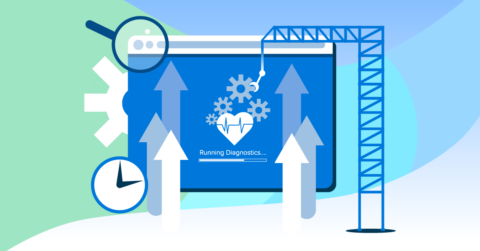
5 Nonprofit Technology Trends To Prepare For
03/08/24
digital design
As society develops, so too do the technologies that we all rely on. Technology trends are constantly coming and going. That makes it essential for organizations to adapt to them (and respond to them) if they want to stay competitive. With this in mind, we have put together a list of the topic nonprofit technology trends that you should be aware of.
Use this list as a kind of preparation for your nonprofit. By knowing what’s coming in the next few years, and making a plan to take advantage of it, your organization can stay on top of the technological landscape. The result? More relevancy, crisper communication with your audience – and more consistent donations.
Let’s check out some of these nonprofit technology trends below.
5 Nonprofit Technology Trends You Need To Know About
1) Artificial Intelligence
AI is all the hype these days, and for good reason. It lets you be more productive (and sometimes even more creative) than ever before. This isn’t just true of private businesses. Nonprofits have every bit as much to gain from learning how to use AI effectively. Use various AI tools properly, and you have a wealth of valuable insights that let you optimize resource allocation and understand donor behavior. The implication is better fundraisers and more donations for your organization
If you are going to use AI effectively, you need to make sure you understand it. It’s a constantly evolving topic – and a big one. With that in mind, your best bet to stay on top of this trend is a combination of two things: using it and constant education. Check out our guide to artificial intelligence in nonprofit marketing for a primer.
2) Remote Workforces
More organizations than ever are remote. This was already in an upward trend before 2020; COVID and the worldwide pandemic only accelerated it. There are a lot of benefits to this. If you don’t need the office space, your organization has less operating costs. Remote workers are also more likely to be skilled in several key technologies. This makes your team more likely to possess a variety of key skills. Also, multiple studies show that workers that have the opportunity to work remotely are happier. If you want a happier team, the ability to work from home should be a serious organizational consideration.
That said, there are very real drawbacks of a primarily remote workforce. One obvious consequence is that there is less in-person interaction. This can have a negative impact on your ability to understand each others’ working styles. Also, things inevitably get lost in translation. Regardless of your own organization’s situation, understanding this trend can be beneficial. If you aren’t at least partially remote, take some time to consider the benefits. Regardless, this is the kind of work situation where things like running a virtual event become a natural skill set of your team – so perhaps it’s time to adapt to this trend!
3) Alternative Payment Methods
Running a successful fundraiser is all about two things:
- Convincing potential donors to care enough about your cause to donate
- Making it easy for them to do so
Many organizations are quite good at the first one. From good email marketing to interactive campaigns, nonprofits know what it takes to communicate effectively with their audience. It’s the second one where they struggle. If you want to get more donations, you simply have to make it easy for people to donate. Naturally, multiple payment methods is a big part of this.
That’s why this third trend is one worth paying attention to. Whether it’s Zelle, Venmo or Apple Pay, people are choosing a wider variety of payment methods these days. This has important implications for your nonprofit. The fact is that different people prefer to pay in different ways. This has a direct impact on your ability to collect donations. If you’re serious about collecting more donations from your donors – allow them to use the payment they’re most comfortable with.
4) Mobile Fundraising Apps
Gone are the days of boring and hard-to-navigate donation pages. According to WhyDonate, we will only continue to see the rise of mobile fundraising apps. This has revolutionized how nonprofits engage with donors. These apps simplify the donation process, which in turn provides a user-friendly interface for supporters to contribute.
In addition, with push notifications and personalized content, nonprofits can maintain a continuous connection with their audience. This is a far cry from the “3-5 emails + landing page” that many donations still incorporate. The idea here is not that every single one of your fundraising campaigns needs to be all that sophisticated. Rather, it’s simply important to keep in mind that apps give you an opportunity as a nonprofit that you might not have had in the past. This trend presents a huge opportunity for nonprofits, so be sure to prepare for it!
5) Data Security Measures
Lastly, one nonprofit technology trend which doesn’t seem likely to fade is the desire for data security. We have seen this sentiment on the rise in recent years. Younger generations are much more demanding of data privacy than previous ones, and different laws continue to pop up requiring some kind of data protection. Simply put, if you are going to stay competitive as a nonprofit, you need to take data security seriously.
There are, of course, a number of ways to meet this demand from your donors. Things like end-to-end encryption and multi-factor authentication not only put your donors at ease, but are better for your organization, as well. That’s because they ensure you are compliant with different regulations. Lastly, like many things, clear communication can play an important role here. Simply making it clear on your site that you take data protection seriously (and linking to your official policy) can go a long way in appeasing donors.
…
Are you an enterprise, nonprofit or small business looking for help on your website? Give us a shout! We provide a free consultation. Email us at info@lughstudio.com or call us at (718) 855-1919!









